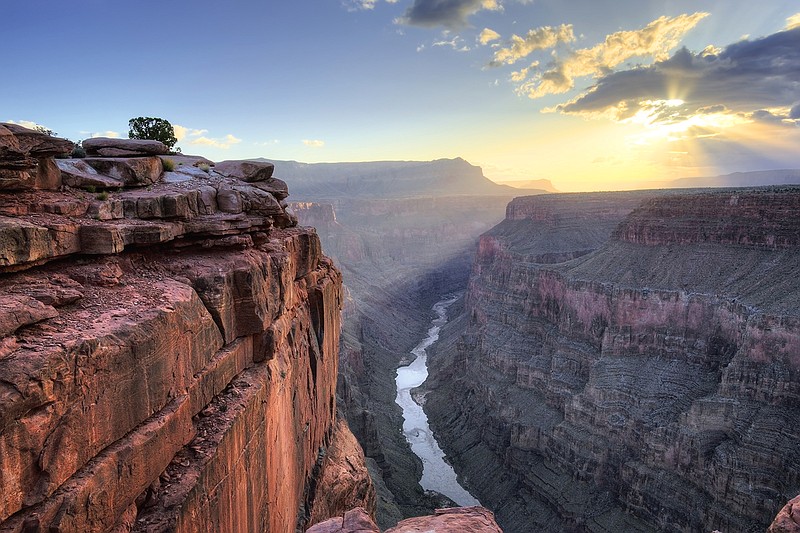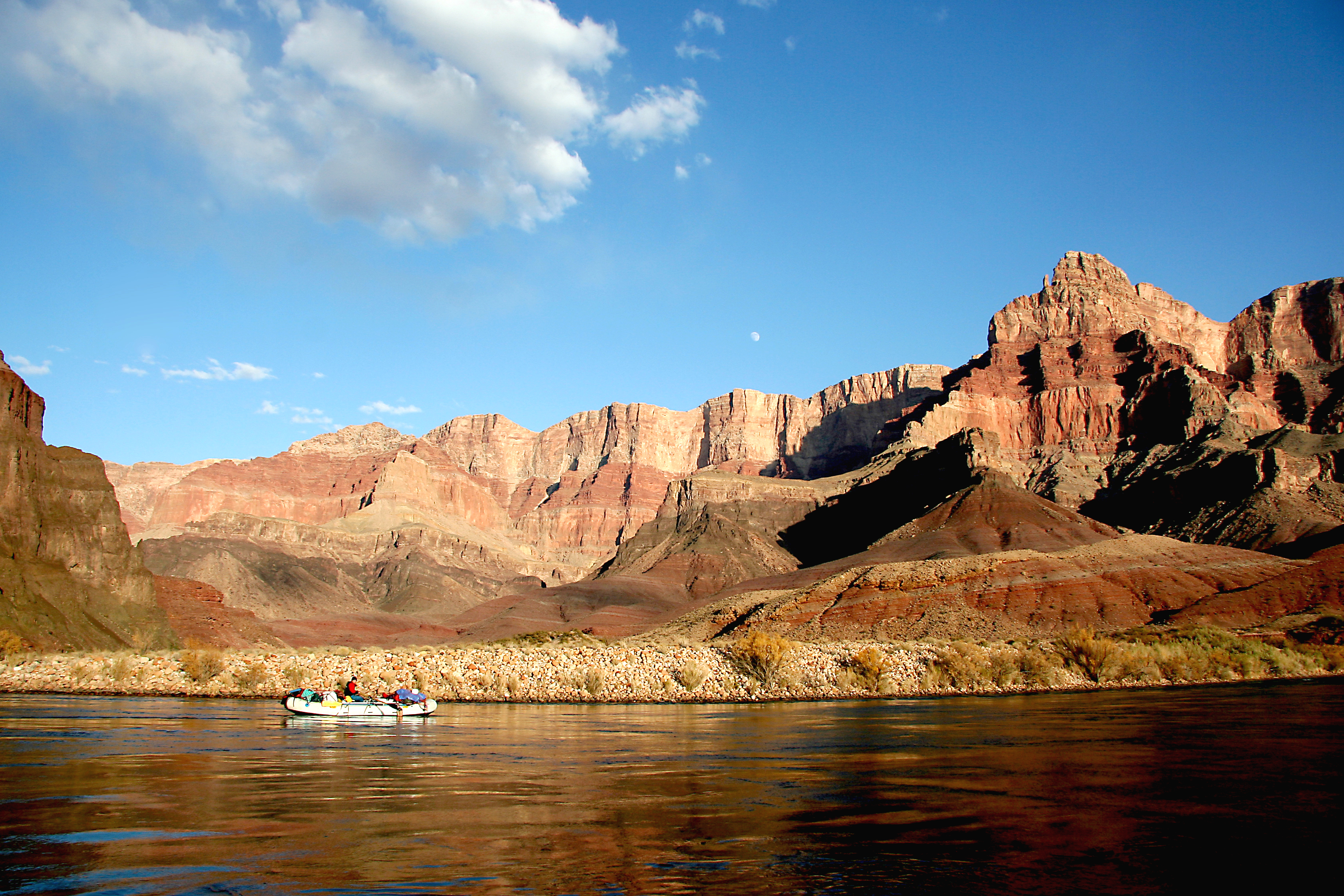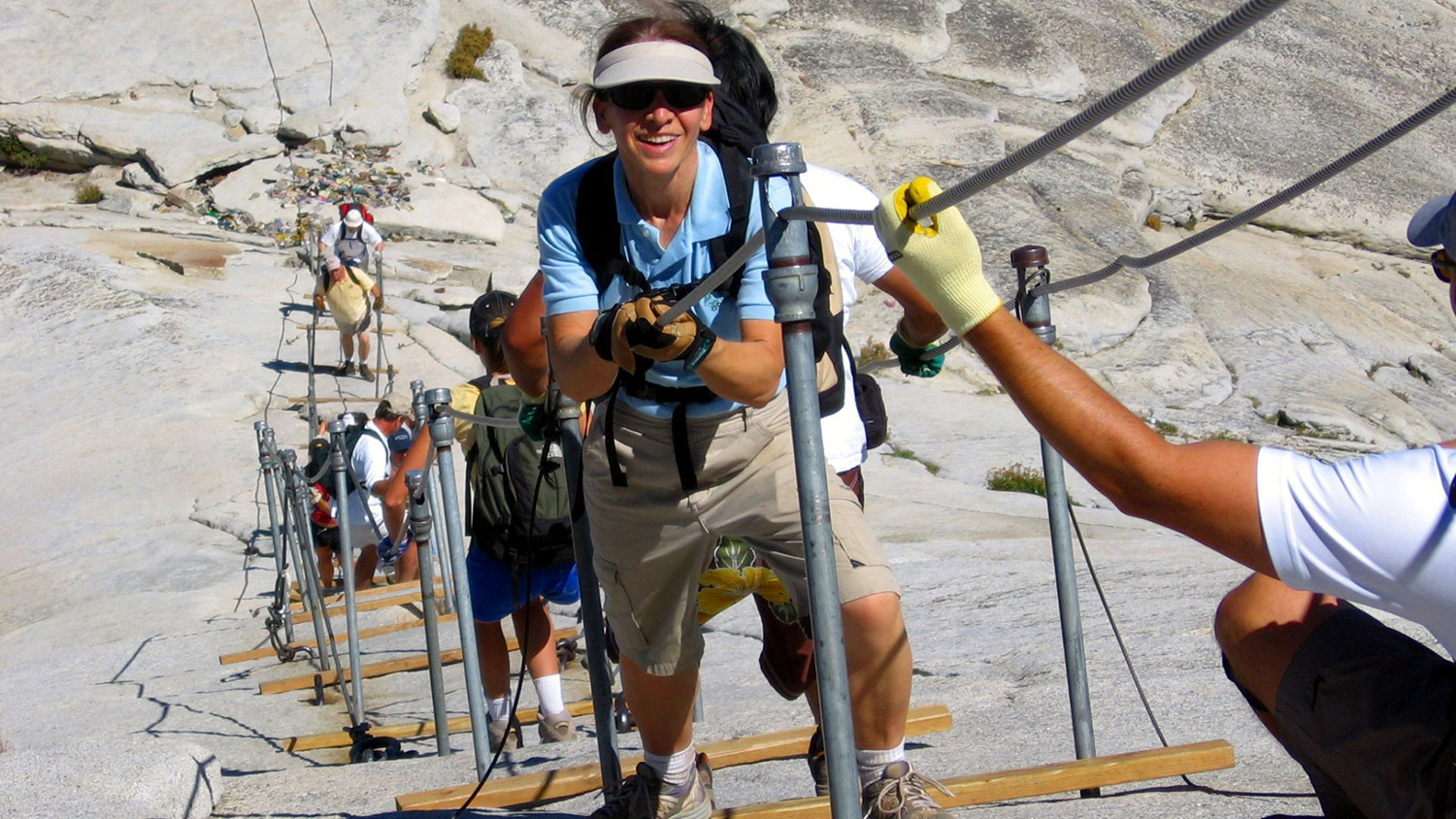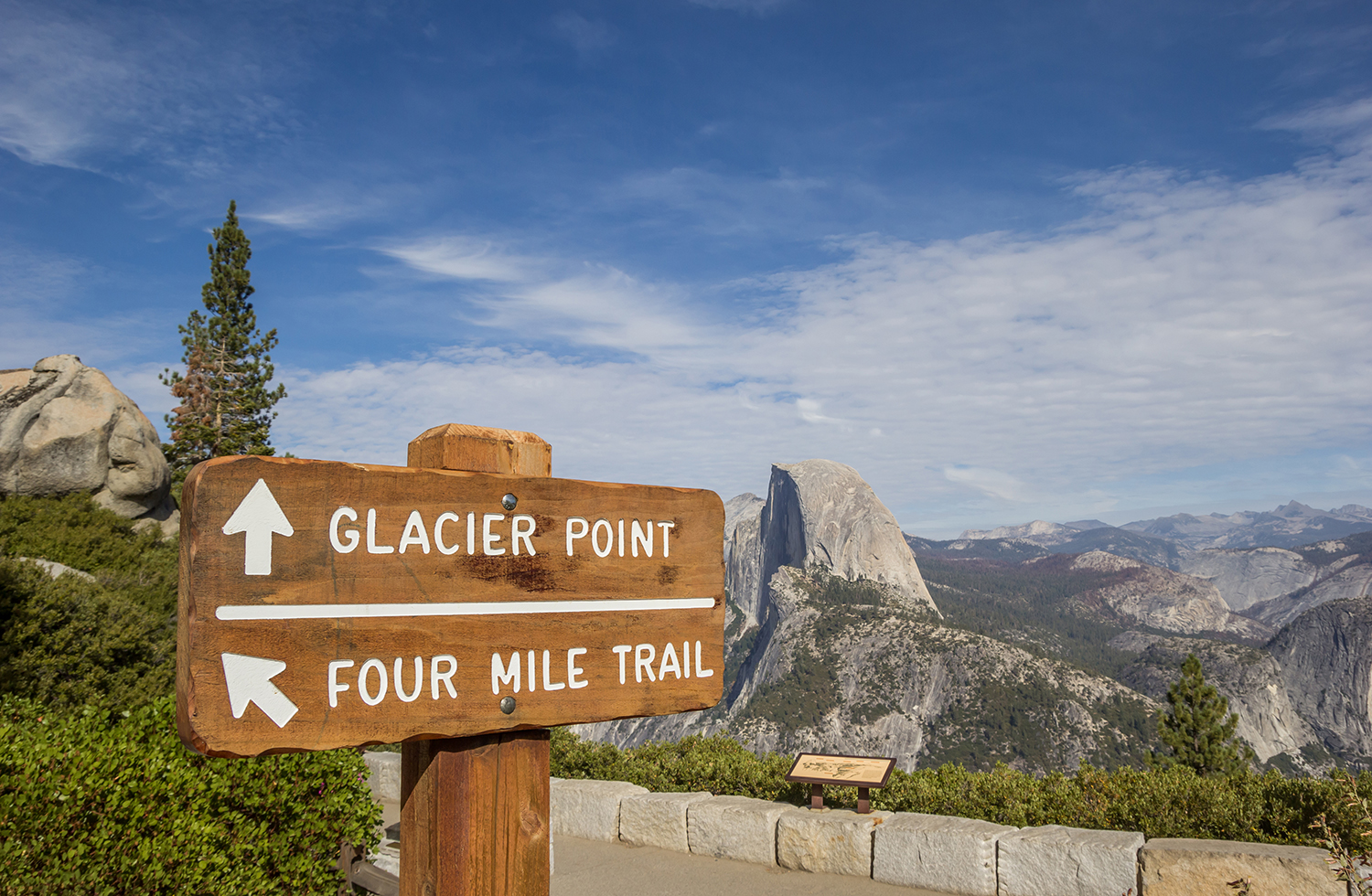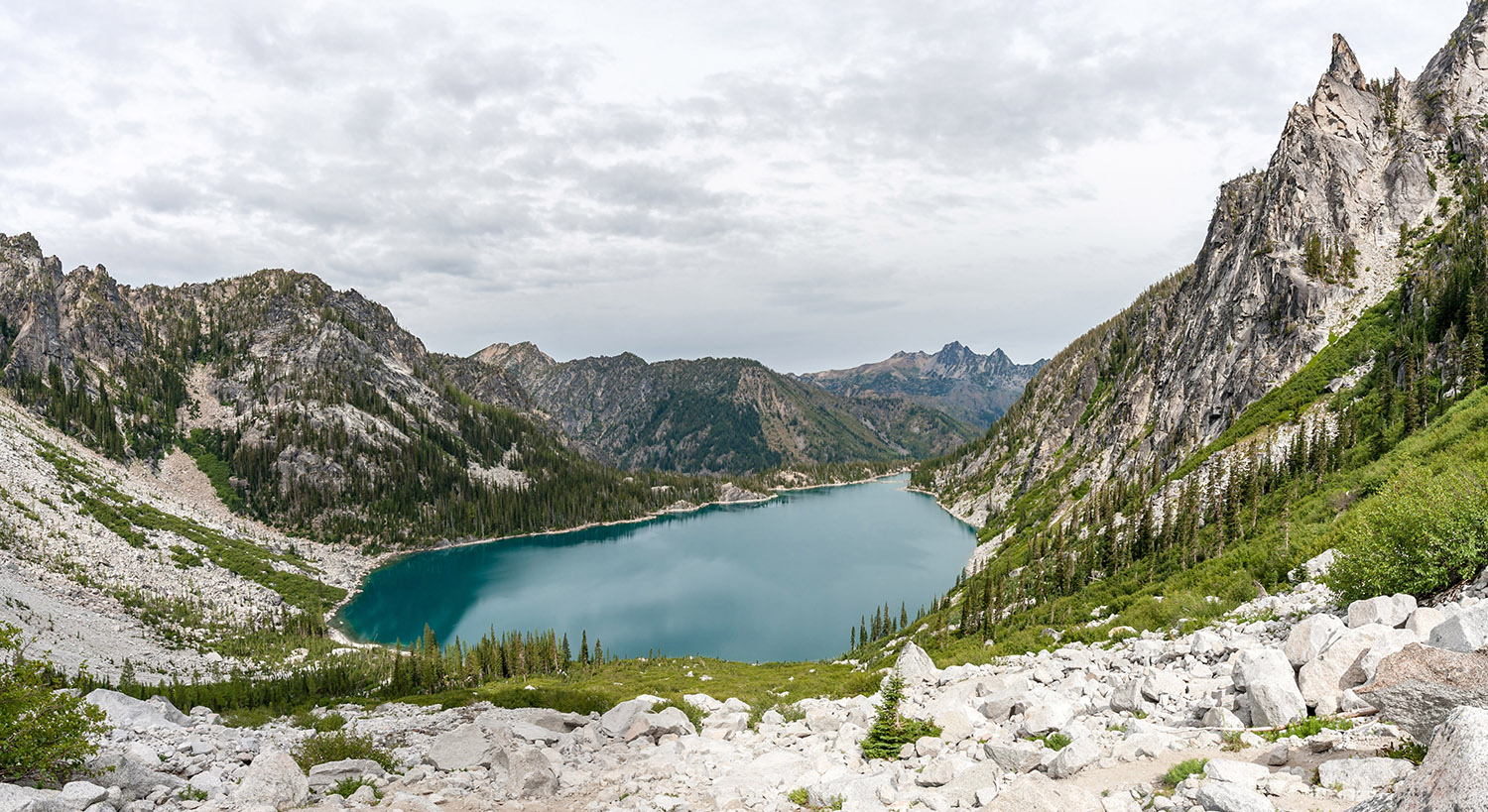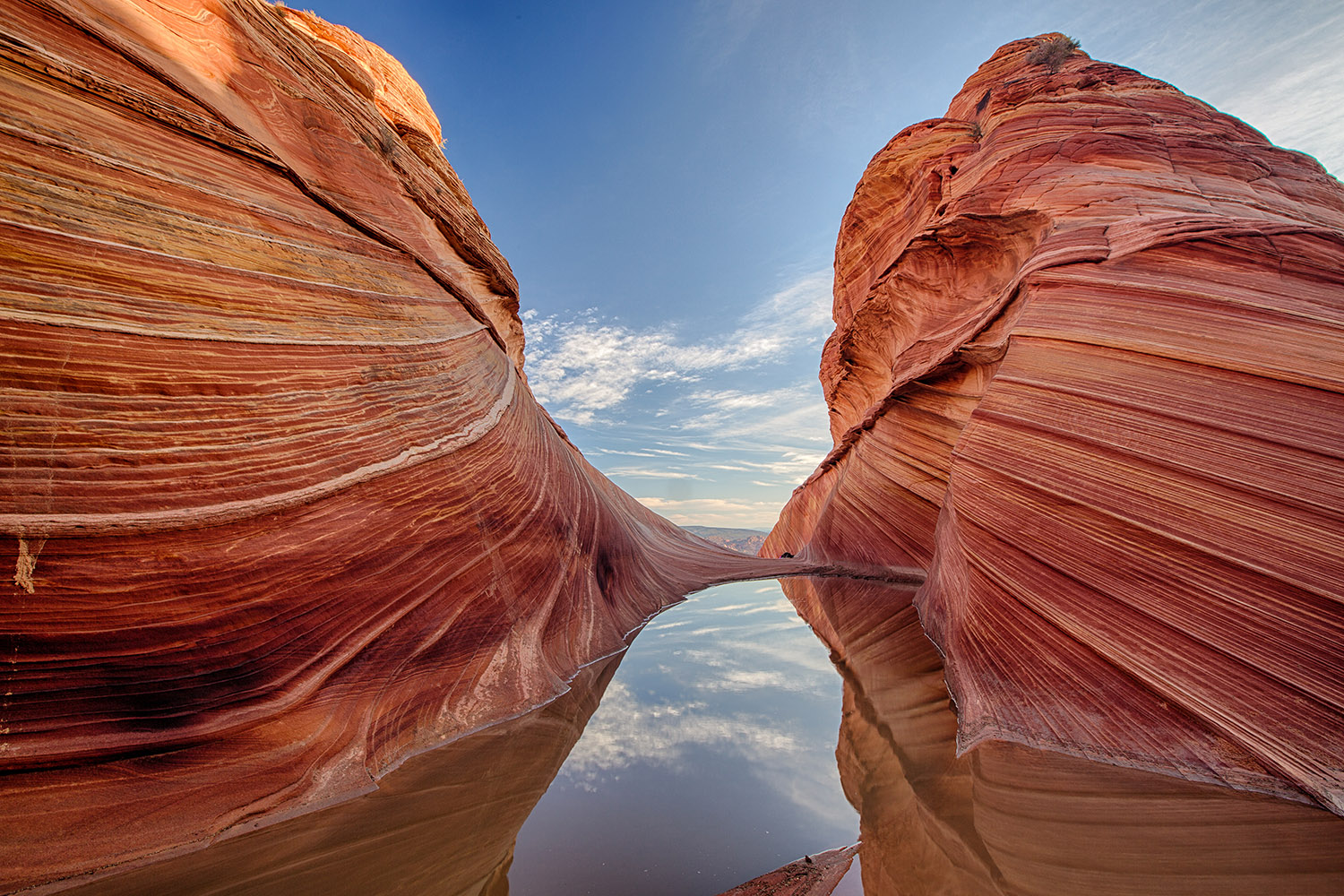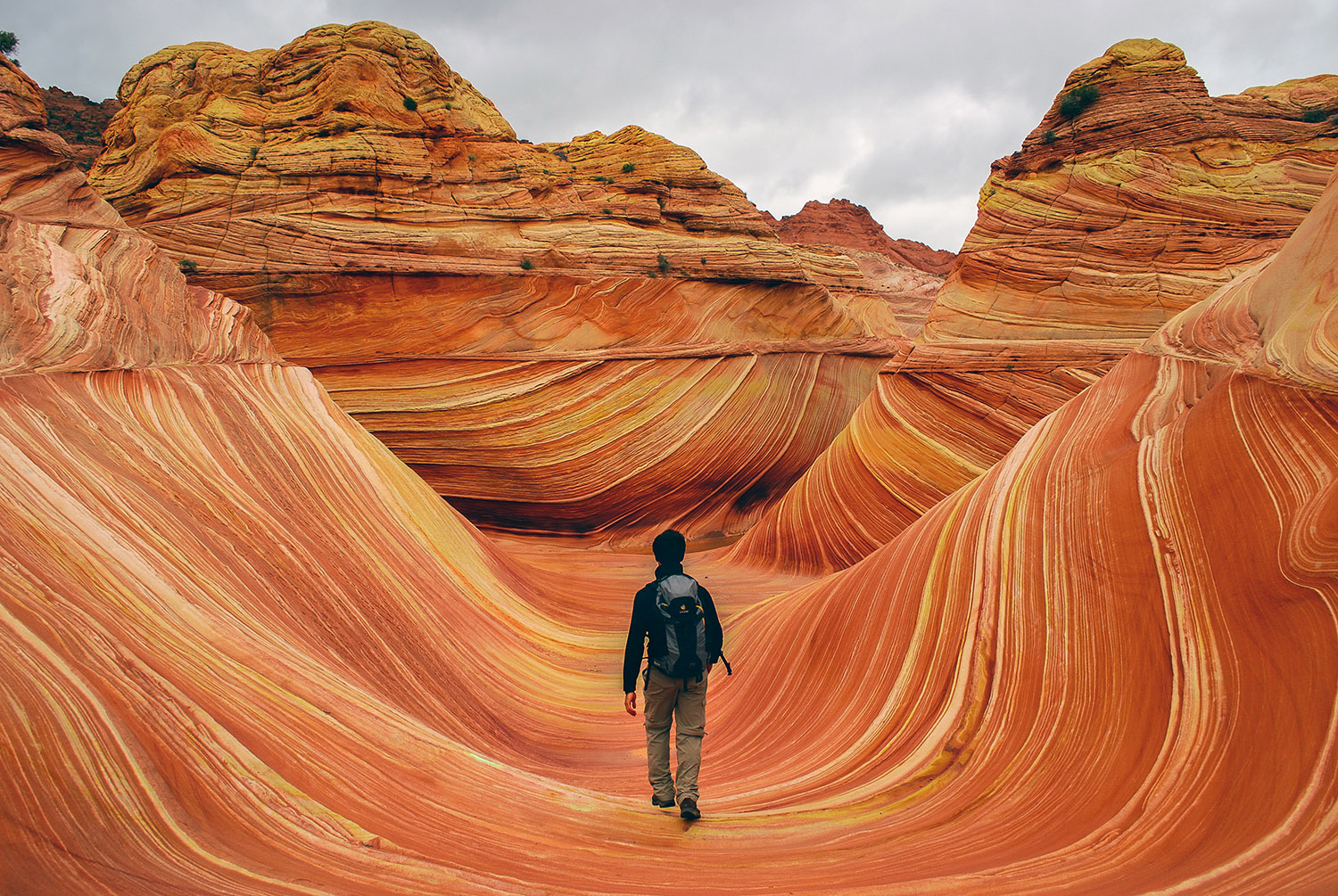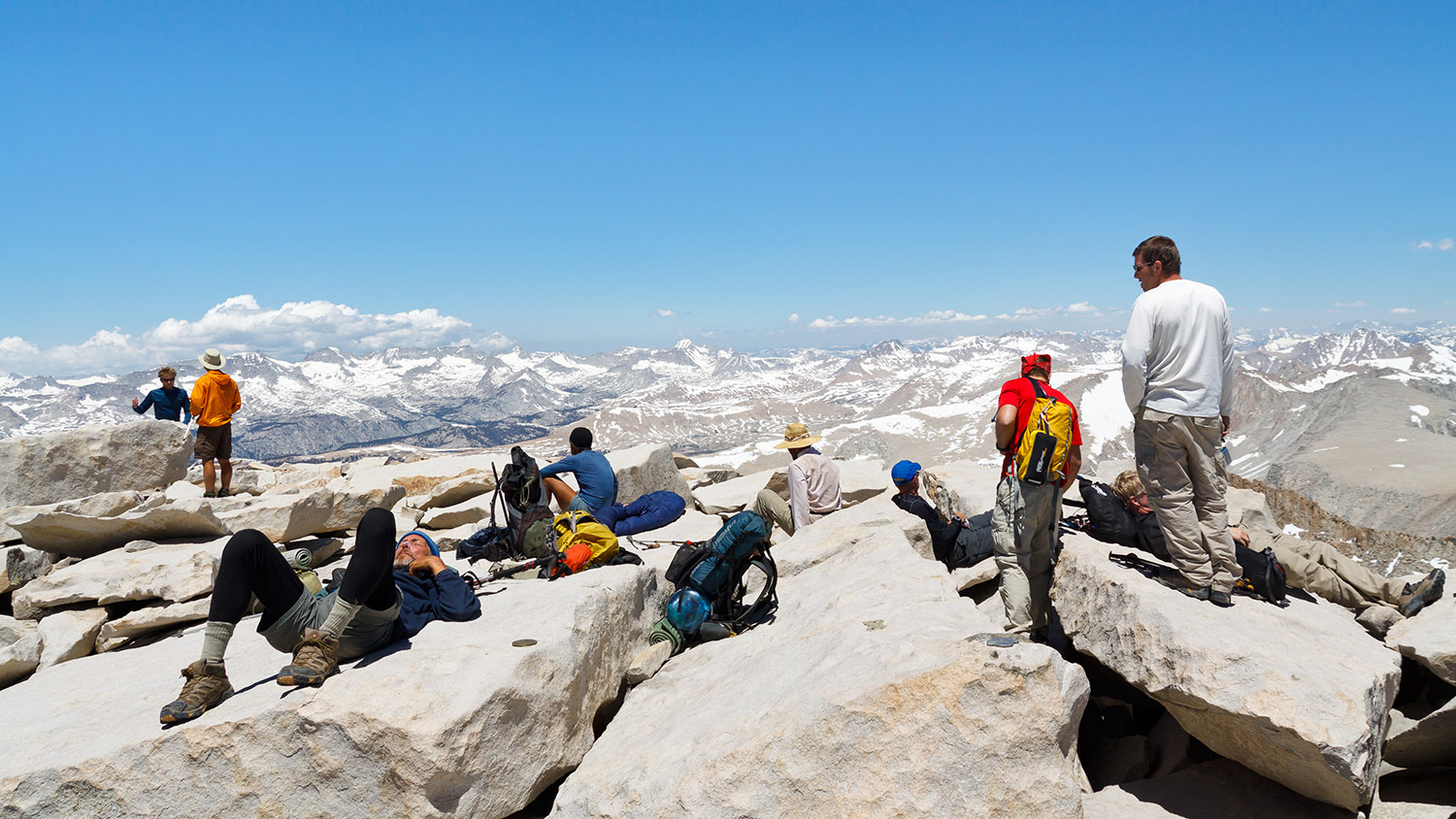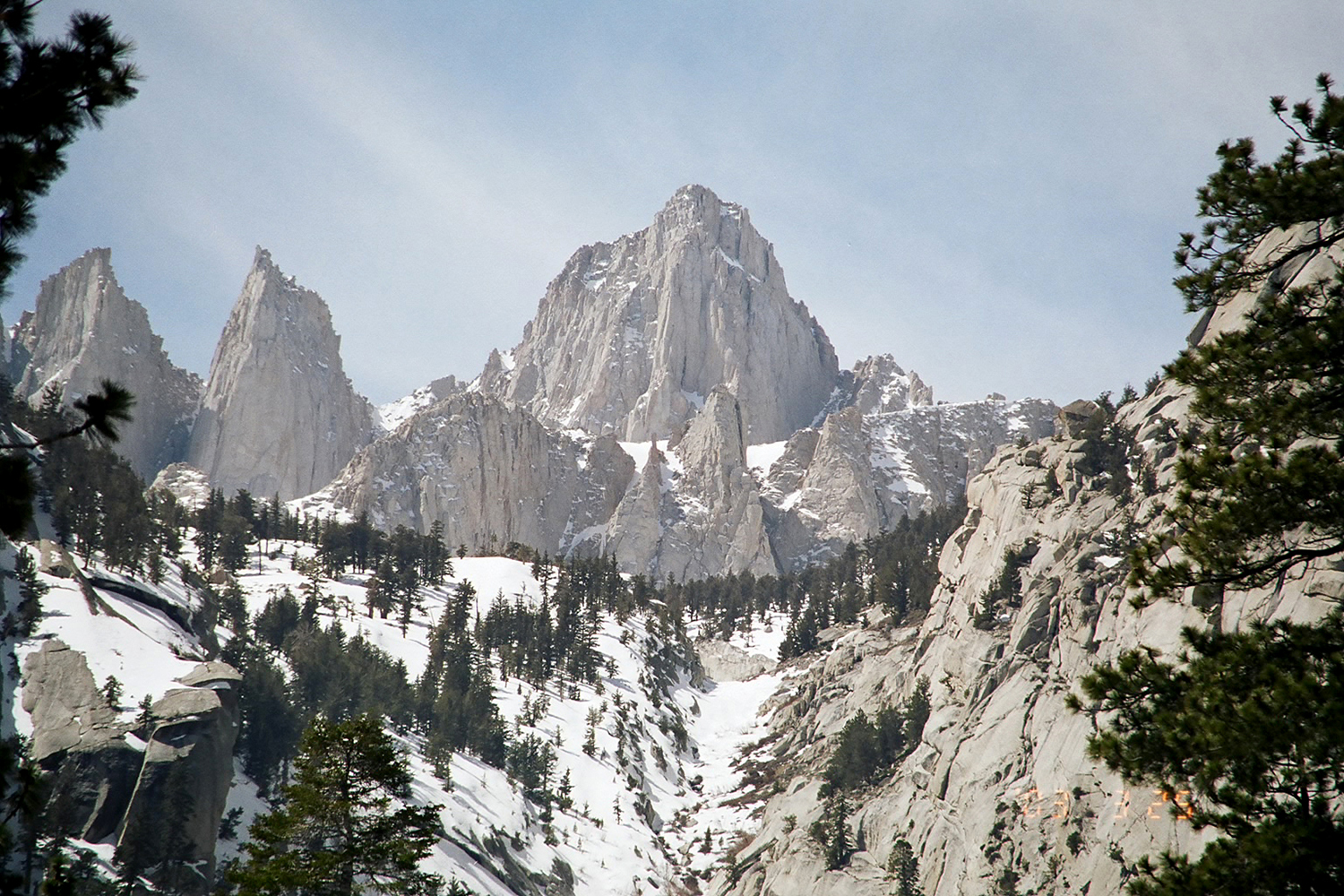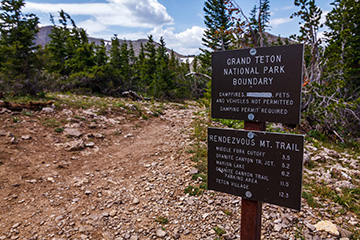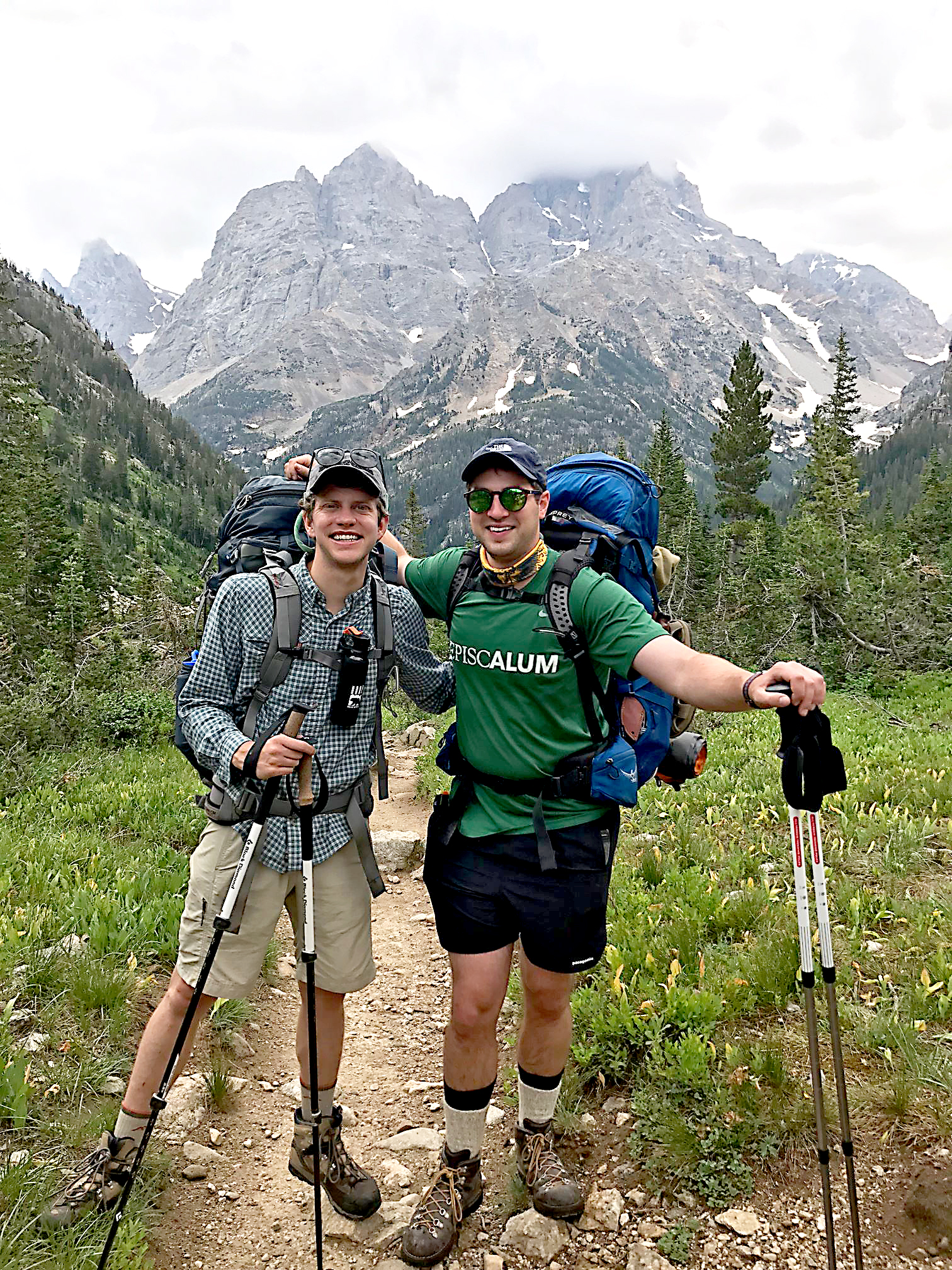Halfway down the South Kaibab Trail in Grand Canyon National Park, in mid-August of 1994, I started to seriously question my dad's sanity.
If you're not familiar with the trail, it's the steeper of the two that lead down into the canyon from its south rim, descending 4,780 feet at an averge grade of 22 percent (think San Francisco streets), and has no water and very little shade. Lugging a pack weighing a little over half my own bodyweight, my 10-year-old self found the conditions rather brutal, but my dad explained that August was the only time we were able to get a permit - and that we were lucky to get it. It was only when we reached the comfort of our jam-packed campground that I realized he was right.
Permit and lottery systems help protect the nation's most popular parks from overuse, as well as provide an uncrowded experience for those who are committed enough to participate in the system. Another plus to lotteries is that the upfront fees charged go to support the park, even if you don't win, as does the additional fee you'll be charged if you do win. And for those of us who dream of experiencing some of the last great places on earth, all the effort is worth it.
So, here are a few tips to give you a leg up on the sizable competition scrambling for a ticket to take in some of Mother Nature's greatest treasures.
Flexibility is key.
If you're willing to visit popular spots during less-appealing times of the year (like the Grand Canyon in August) or on days when fewer people tend to want to visit, say a Tuesday as opposed to a Saturday, you'll likely up your lottery chances significantly. You can also get a permit for a less-popular route in your park of choice. When you pick up your permit, check with the ranger to see if there have been any cancellations or if there are day-of permits available. That way you've got a chance of getting the permit you want, but won't be stuck without any options if your luck doesn't come through.
More isn't always merrier.
Most permits are limited to a half-dozen people, but if you whittle your group down to just two or three folks you have a better chance of scoring a permit. This is because many parks allow only a certain number of people - not a certain number of groups - in a camping area each night, or to depart from a particular trailhead per day.
Take the night off.
You didn't win the lottery, and you showed up at the ranger station two hours before the park's opening for three days straight and you still don't have a backcountry permit. If you're determined to hike the trail anyway, don't risk camping without a backcountry permit. Instead, relish the freeing sensation of leaving your 50 pounds of stuff behind and just do a day hike. Hey, it's not ideal, but it's better than a fine. Penalties for camping sans permit will set you and your plans back, leading to immediate ejection from the park and possibly jail time, plus up to $5,000 per person.
The early bird gets the permit.
(Or has a better chance, anyway.) Submit your application as soon as the park starts accepting them for your preferred trip date. For a park like the Grand Canyon, you may as well not bother if you don't apply by the day officials start accepting permit applications. The park officially starts accepting applications for backcountry permits four months ahead of the start date of a trip, but will allow people to fax in applications a week or so prior. For instance, for trips starting June 1, the park started allowing people to fax in applications beginning Jan. 20. All applications received by 5 p.m. MST Feb. 1 were then placed in random order before being considered.
Here's a look at some of the most coveted permits and what you need to know to increase your chances of getting one.
Grand Canyon
Self-guided river permit, or backcountry camping permits
At one point it was the norm to wait 25 years to score a permit for a self-guided trip on the Colorado River. But in 2006 the park introduced a weighted lottery system for self-guided trips for the more technical - and coveted - portion, from Lees Ferry to Diamond Creek (typically 12- to 25-day trips). The system gives better odds to those who have not been down the Colorado in at least five years, as well as those who transitioned from previous years' waitlists. Still, the competition is super-steep. In 2016, of the 4,911 people who applied through the lottery, 399 won trips.
Applications are accepted during the first three weeks of February through npspermits.us, potentially granting river launch dates for the following calendar year. Follow-up lotteries are then held to reassign cancelled or leftover trips. And don't forget about your camping permit - backpackers will be in competition with about 20,000 other hopefuls for limited backcountry permits for popular campsites, which typically fill up the first week of the first month they become available for request.
If you want an easier primer, both in terms of the water and your chances of getting on it, there are also permits for trips launching from Diamond Creek (typically 2- to 5-day trips) which are issued on a first-come, first-served basis up to a year in advance. Though there are only two launches a day, they carry fairly good odds. Visit nps.gov/grca/planyourvisit/whitewater-rafting.htm to learn more and apply.
Yosemite National ParkHalf Dome day hike permit
Each day, about 300 hikers are permitted on the cables route that allows hikers to summit the park's towering icon sans rock climbing equipment. That number could seem like a lot if you're not aware of how many people want to do it - anywhere from 2,000 to 16,000 preseason lottery requests were submitted for each day in 2017, though each applicant will only have one of their seven requested dates filled, at best. Applications for the preseason lottery are accepted beginning in early March through recreation.gov, and daily lotteries are held during the hiking season. (The cables are typically down from Columbus Day to late May, when climbing equipment is required.)
Making the hike part of a longer backpacking trip that begins outside Yosemite is one way to beat the hordes wanting to acquire a day hike permit through the park's lottery system. However, the only other wilderness permits that are valid for hiking Half Dome are those issued by Inyo National Forest for backpackers hiking the John Muir Trail starting at either the Cottonwood Lakes or Cottonwood Pass trailhead, a change from previous rules.
Enchantment Lakes, Washington
Camping permit
With the sublime beauty of the area's glaciated peaks, this series of lakes takes you through deep forest and alpine landscapes of the Okanogan-Wenatchee National Forest in the Cascade Mountains. All overnight campers must have a permit during the most popular time to visit: May 15 through Oct. 31. Far more people want to come here than the number of permits granted - between June 15 and Oct. 15, only 60 people are allowed in at a time. The Enchantments are separated into five zones, with the Core Zone being the most coveted. In 2017, 17,988 applications were submitted for the Core Zone's 728 available permits. The annual permit lottery is typically held mid-February through early March, when about three-quarters of the year's permits are handed out. You can also try to make a reservation after the lottery ends, or just show up, as a small number of permits (one a day, except Sunday, for each zone) are handed out to walk-ins.
The WaveHiking permit
The Wave sandstone feature, well-described by its name, has only 20 available permits per day for the 5-mile round-trip hike to its home in the Coyote Buttes North area of Utah and Arizona's Paria Canyon-Vermilion Cliffs Wilderness. Ten of those permits are handed out that day, while the other half are won through a lottery process you can apply for at blm.gov/az/paria four months in advance of your desired date. Your best bet is to try for midweek, and January or early February are the least popular months. Those hoping to visit in January have a 25 percent chance of securing a permit, while those hoping to visit in peak season - April-June and September-November - have a 4-5 percent chance.
Trail permit
Located in California's Inyo National Forest, the 11-mile trail to the top of the contiguous U.S.' highest summit is strenuous, but not technical, at least when the trail is free of snow (typically late June to mid-October). Permits to hike Mount Whitney between May 1 and Nov. 1 are issued through a lottery system via recreation.gov. The lottery for this season began Feb. 1 and ends at midnight EST March 15. Any remaining permits will be available for real-time web reservations beginning April 1 at 7 a.m. PT, though that's unlikely, as last year's 15,000 lottery applicants only saw a 35 percent success rate. Each group can only submit one application, though the group can list up to 15 trip choices and three alternate trip leaders on the application. If you win, each person in the group must pay a $15 reservation fee by April 30 to secure your date. Any unclaimed lottery permits will become available online May 1.
Teton Crest TrailBackcountry permit
Grand Teton National Park accepts requests for summer season backcountry permits starting the first Wednesday in January at 8 a.m. MST and running through March 15. And make note: If a specific start time is mentioned, you can bet your only chance of getting a reservation is applying early that day. About one-third of the available permits are up for reservations, while the rest are walk-in permits, handed out up to one day before the start of a trip by visiting either the Craig Thomas Discovery and V isitor Center or the Colter Bay Visitor Center as soon as it opens. Be forewarned: July and August are the busiest months. You can make reservations and check availability of campsites in real time at recreation.gov. Access the reservation page through nps.gov/grte/planyourvisit/back.htm, where you'll find other helpful information to help you prepare.
